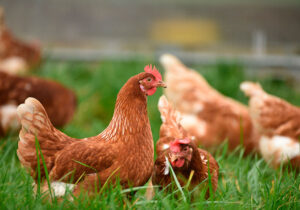
Neosporosis-Induced Abortion in Cattle
- زمان تقریبی مطالعه: 3 دقیقه

Neospora caninum is a protozoan parasite recognized as a major infectious cause of weak calf births and abortion in cattle. Infections with N. caninum have been reported worldwide, including studies in the United States, New Zealand, the Netherlands, and Germany. These studies suggest that 12% to 45% of aborted bovine fetuses are infected with this organism. In the U.S., exposure is common, with 16% to 36% of dairy cattle testing seropositive.
A distinguishing feature of this disease is that abortion typically occurs between the 4th and 6th month of gestation, which is a unique timeframe among infectious causes of bovine abortion. The parasite is efficiently transmitted, and in some herds, the infection rate can reach up to 90%. Cattle can become infected by one of two routes:
- Horizontal transmission: through ingestion of feed or water contaminated with feces from infected dogs (or other canids) containing oocysts.
- Vertical transmission: from a dam to the fetus during pregnancy.
An important characteristic of N. caninum is that once a fetus is infected—either through an infected dam or bull—the infection persists for life. An infected cow can transmit the organism via the placenta to the fetus during every pregnancy. In some cases, this congenital infection leads to abortion or the birth of weak calves. Although many congenitally infected calves appear clinically normal, they remain persistently infected for life. Female calves born with the infection can transmit it to their offspring during gestation, thus perpetuating the infection within the herd.
Vertical transmission is considered the main route of infection in cattle, though both horizontal and vertical routes are critical for parasite survival in nature.
Pathogenesis and Mechanism of Abortion
The mechanism by which Neospora causes abortion is complex and not yet fully understood. Abortion can result from the primary infection (e.g., ingestion of oocysts) but is more often linked to reactivation of a persistent infection during pregnancy. Once the organism reaches the bloodstream of a pregnant cow (parasitemia), it can invade the placenta and fetus.
Abortion may result from:
- Direct damage to the fetus or placenta, or
- Placental dysfunction, which can stimulate the release of maternal prostaglandins, leading to luteolysis and subsequent abortion.
A definitive diagnosis is achieved by detecting N. caninum in fetal tissues, particularly the brain. A killed vaccine (e.g., NeoGuard) is available, but studies show it has limited efficacy in reducing abortion risk, and its overall reliability remains questionable.
Control strategies focus on:
- Culling positive animals
- Preventing the introduction of infected replacement heifers
- Avoiding potential sources of horizontal transmission
Life Cycle and Transmission of Neospora caninum
Horizontal transmission occurs when cattle ingest oocysts shed in the feces of dogs, coyotes, or other wild canids. Once ingested, the oocysts excyst and release tachyzoites, which rapidly multiply and enter the bloodstream (parasitemia).
Tachyzoites can:
- Cross the placenta to infect the fetus, or
- Become encysted by the host’s immune response, forming tissue cysts.
These tissue cysts, primarily located in the brain, spinal cord, and muscles, may also be found in the placenta. When canids consume infected tissues—such as the placenta, aborted fetus, or carcasses—they can become infected and begin shedding oocysts in their feces, thus restarting the cycle.
Deer have also been shown to harbor Neospora cysts, serving as an additional infection source for dogs.
Notably, direct transmission between cattle does not occur, and although not conclusively ruled out, transmission through natural breeding or embryo transfer is considered highly unlikely.


